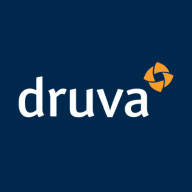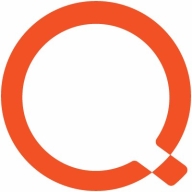

Find out in this report how the two Disaster Recovery (DR) Software solutions compare in terms of features, pricing, service and support, easy of deployment, and ROI.


Druva Phoenix is a comprehensive cloud-based data protection and management solution that enables organizations to securely backup, recover, and manage their data across endpoints, physical servers, virtual machines, and cloud applications. With its scalable and flexible architecture, Druva Phoenix simplifies data protection and eliminates the need for traditional backup infrastructure.
By leveraging the power of the cloud, Druva Phoenix offers organizations a cost-effective and efficient way to protect their critical data. It provides automated backup and recovery capabilities, ensuring that data is always protected and easily recoverable in the event of a disaster or data loss. With its global deduplication and compression technology, Druva Phoenix minimizes storage requirements and reduces costs.
Druva Phoenix also offers advanced features such as point-in-time recovery, allowing organizations to restore data to a specific point in time, and granular file-level recovery, enabling users to recover individual files or folders. Its intuitive web-based console provides a centralized view of all protected data, making it easy to manage and monitor backups across the entire organization.
In addition to data protection, Druva Phoenix offers comprehensive data management capabilities. It enables organizations to gain insights into their data through advanced analytics and reporting, helping them make informed decisions and optimize their storage resources. Druva Phoenix also supports legal and compliance requirements by providing eDiscovery capabilities and ensuring data is retained and disposed of according to regulatory guidelines.
With its cloud-native architecture, Druva Phoenix offers organizations the flexibility to protect and manage their data across a wide range of environments, including on-premises, remote offices, and cloud applications such as Microsoft 365 and Google Workspace. It seamlessly integrates with popular cloud platforms like AWS and Azure, allowing organizations to leverage their existing cloud investments.
Quest QoreStor is commonly used for deduplication, compression, backup, and restore, integrated with NetVault for robust data redundancy and cloud storage replication.
Quest QoreStor optimizes data management with its sophisticated deduplication and compression capabilities, allowing companies to efficiently handle data redundancy. By integrating seamlessly with platforms like NetVault, Veeam, and resellers utilizing SPHiNX and BackBox, Quest QoreStor serves as both local and offsite repositories. This solution manages replication between production and corporate locations, strengthening recovery and improving backup operations. QoreStor's software-based nature ensures flexibility and easy integration, although improvements in replication and installation are sought by users.
What Are Key Features of Quest QoreStor?In sectors such as finance, healthcare, and technology, Quest QoreStor aids in maintaining vital data management with its robust features, enhancing data recovery strategies. Its use with secondary backup targets and replication capabilities supports a wide range of industry requirements. However, challenges such as initial setup complexity and system interface improvements are areas for growth, particularly in expanding capacities and addressing specific cybersecurity concerns like ransomware protection on Linux.
We monitor all Disaster Recovery (DR) Software reviews to prevent fraudulent reviews and keep review quality high. We do not post reviews by company employees or direct competitors. We validate each review for authenticity via cross-reference with LinkedIn, and personal follow-up with the reviewer when necessary.